Vicent Cucarella Ramón - Benjamin Drew
Здесь есть возможность читать онлайн «Vicent Cucarella Ramón - Benjamin Drew» — ознакомительный отрывок электронной книги совершенно бесплатно, а после прочтения отрывка купить полную версию. В некоторых случаях можно слушать аудио, скачать через торрент в формате fb2 и присутствует краткое содержание. Жанр: unrecognised, на английском языке. Описание произведения, (предисловие) а так же отзывы посетителей доступны на портале библиотеки ЛибКат.
- Название:Benjamin Drew
- Автор:
- Жанр:
- Год:неизвестен
- ISBN:нет данных
- Рейтинг книги:3 / 5. Голосов: 1
-
Избранное:Добавить в избранное
- Отзывы:
-
Ваша оценка:
- 60
- 1
- 2
- 3
- 4
- 5
Benjamin Drew: краткое содержание, описание и аннотация
Предлагаем к чтению аннотацию, описание, краткое содержание или предисловие (зависит от того, что написал сам автор книги «Benjamin Drew»). Если вы не нашли необходимую информацию о книге — напишите в комментариях, мы постараемся отыскать её.
Benjamin Drew — читать онлайн ознакомительный отрывок
Ниже представлен текст книги, разбитый по страницам. Система сохранения места последней прочитанной страницы, позволяет с удобством читать онлайн бесплатно книгу «Benjamin Drew», без необходимости каждый раз заново искать на чём Вы остановились. Поставьте закладку, и сможете в любой момент перейти на страницу, на которой закончили чтение.
Интервал:
Закладка:
A North-Side View of Slavery: The Refugee, or the Narratives of Fugitive Slaves in Canada should not be read having in mind solely the transcriber but taking into consideration the ex-slaves’ messages and stories that, in a Foucaultian fashion, reveal and withdraw the ideological tensions of the nineteenth century. As a matter of fact, the volume abides by the ideologies that allowed ninteenth-century slave narratives to be published, and therefore exposes the limitations but also the identifications of the life accounts of fugitive slaves with the religious politics of domesticity. This is truly how the biographic narratives were not only accepted but also publicly legitimized, and this sets the stage through which we need to read and understand Drew’s transcription and edition of the brief biographies of the fugitive slaves he interviewed.
As a slave narrative compendium, the collection opens with a paratextual advertisement that defines the book as “original in design and scope, and has been executed with the most conscientious care and fidelity,” and forewarns readers that “[n]owhere else can be found such a mass of direct and unimpeachable testimony as to the true character of the Peculiar Institution, by witnesses who have had the best opportunities of knowing its nature, and who occupy a point of view from which its characteristic lineaments can be most distinctly discerned”. By stressing both the veracity and verisimilitude of the testimonies, the text is advertised as a non-fiction account of slavery. It also prepares and induces the readers to trust the messages that will be found throughout. Right after the advertisement, Benjamin Drew writes his Author’s Preface which emphasizes again the honesty of those pieces of autobiography and states the transnational nature of the volume. The author alludes to the fugitive slaves as “colored Canadians” and therefore inscribes his slave narrative as a “cross-border experience” (Kang 443). This is underlined once more when the trajectories of the escapees cross the geographical but also ontological border that differentiates the two states: “while held in bondage in their native land, shed a peculiar lustre on the Institution of the South. They reveal the hideousness of the sin, which, while calling on the North to fall down and worship it, almost equals the tempter himself in the felicity of scriptural quotations”.
Drew’s transnational slave narrative, though, banks on the classical tropes of the genre: the dreadful experience of racist violence, family separation, and the fear of being sold south. The catalogue of infamous mistreatment and coercions are told in the current sentimental tone to appeal directly to the white reader’s compassion. George Johnson tells Drew that “the slaves were always afraid of being sold South” and also speaks of the mistreatment of a fellow-slave who “received five hundred and fifty lashes for striking the overseer … two months after, I saw him lying on his face, unable to turn over or help himself.” James Adams recounts that: “I was not used so badly as some even younger than myself, who were kicked, cuffed, and whipped very badly for little or nothing”. William Johnson also remarks the violence inflicted upon him: “I used to have rheumatism, and could not always do so much work as those who were well,– then I would sometimes be whipped” and Henry Banks horribly exposes how
N–‘s overseer whipped me often – stripped me, and tied me up when he did it, and generally drew blood,– sometimes he would not be so severe as at others, but I have frequently had to pull my shirt from my back with a good deal of misery, on account of its sticking in the blood where I had been lashed. Let daybreak catch me in the house, instead of currying the horses, that was as good for a flogging as any thing else,– if caught standing at the plough, instead of moving, that was good for fifty lashes more or less,– the least of any thing would provoke it. I was whipped once because the overseer said I looked mad.
These examples, among others that proliferate throughout the text, attest to the central role that violence played in maintaining the institution of American slavery and link Drew’s book with the abolitionist crusade against the brutality of slavery. This is best summarised in Harriet Tubman’s lapidary sentence: “I think slavery is the next thing to hell”. Exposing the mistreatment of slave subjects acquires a different meaning here to that one that abounds in classical slave narratives, for, as we shall see, these episodes are strenuously contraposed by the freedom that the ex-slaves relish in Canada. As a good example of abolitionist literature, here the slave never strikes back but rather endures this infamous behavior with patience, determination, and faith. One of the most appalling stories is that of Isaac Williams, who confesses how disturbed he felt when his master forced him to leave his wife’s bed so that he could take the slave’s place. Although it can be inferred that a rape took place, no word about this is mentioned. Williams only voices the way in which he was sold afterwards, showcasing his inability to strike back nor his wish to behave unmorally: “She was crying, you see. He took me to his bedroom, and chained me by one leg to his bedpost, and kept me there, handcuffs on, all night. He slept in the bed. Next morning, he took me in a wagon and carried me to Fredericksburg, and sold me into a slave-pen to George Ayler, for ten hundred and fifty dollars”. With this episode, William reverses the stereotype of the Black salacious man and of the danger his freedom should pose to society and, though with a shortage of words and rather in a subtle way, he demonstrates that the real danger lies in slavery and the masters that embody its practices. In this way, the white readership is presented with the gracious virtues of the Black self against the cruelty of the white masters and overseers. Thus, and despite the catalogue of little biographies that somehow changes the structure of a slave narrative as it were, the collection is modelled following the classic abolitionist genre and serves to open the white readership’s eyes to the America and Canada’s capital sin.
Nonetheless, although this recollection of U.S. ex-slaves has not been granted the necessary critical acknowledgement, some scholarly and historical voices have fittingly pointed to its ideological blemishes. In his reading of Drew’s book, Frank Black centers on the ideology that permeate the transcriptions and, more concretely, on the sentimental strategies and the politics of domesticity. He believes that “[p]erhaps more genuinely troublesome than the number of marriages recorded by Drew is the strength of marital ties suggested by the proportion of fugitive couples who escaped bondage together” (287). Marriage was not only central to religious creed and civil mandates of the nineteenth-century North America, but it was also a crucial issue around the limitations of the slave’s humanity and sexuality.
In the nineteenth century, the tenets of family law held that marriage and family were natural, sacred, and morally compelled. This law was deemed to be based both on God’s plan and command, and on natural law which is but itself a reflection of divine law and of morally accepted behavior. If ex-slaves wanted to be humanly recognized creatures of God, they needed to be consistent with the values of the legal system and, accordingly, marriage became a form of social respectability and attachment. In Drew’s book, the discourse on marriage and domesticity follows the accepted prospects of acceptability. That is why out of the twenty-five male fugitives indicating they were married at the time of their escape, ten fled with their wives, and six others became reunited with their wives in Canada. And to put things even clearer, two of those who left their wives in bondage had already been separated from them. Thus, the marriage discourse bespeaks the legitimation of the personhood of the male and female ex-slave. Most possibly, as Black astutely realizes, “Drew was attracted or directed to those Canadian fugitives who approximated most closely that conduct and family composition consistent with what abolitionists hoped to find among slaves and former slaves” (288). In fact, when, due to the cruelties of slavery, families were ripped apart, Drew resorts to sentimentality to exonerate the slave’s solitude and to explain why there is no possibility to harbor familial values. For example, when the fugitive Henry Atkinson describes his desolation for reluctantly leaving his wife behind, Drew inserts a parenthetical comment so that it can be read by the white readership:
Читать дальшеИнтервал:
Закладка:
Похожие книги на «Benjamin Drew»
Представляем Вашему вниманию похожие книги на «Benjamin Drew» списком для выбора. Мы отобрали схожую по названию и смыслу литературу в надежде предоставить читателям больше вариантов отыскать новые, интересные, ещё непрочитанные произведения.
Обсуждение, отзывы о книге «Benjamin Drew» и просто собственные мнения читателей. Оставьте ваши комментарии, напишите, что Вы думаете о произведении, его смысле или главных героях. Укажите что конкретно понравилось, а что нет, и почему Вы так считаете.
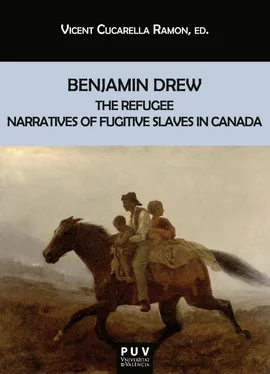

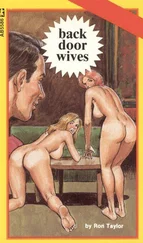

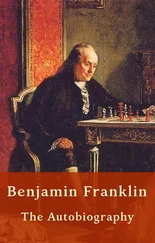
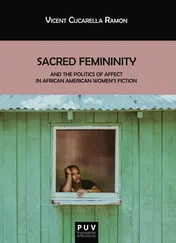


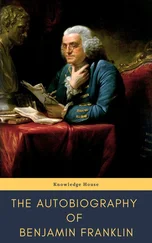

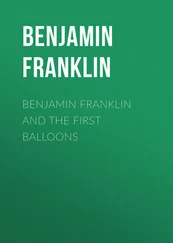
![Benjamin Franklin - Memoirs of Benjamin Franklin; Written by Himself. [Vol. 2 of 2]](/books/747975/benjamin-franklin-memoirs-of-benjamin-franklin-wr-thumb.webp)
![Benjamin Franklin - Memoirs of Benjamin Franklin; Written by Himself. [Vol. 1 of 2]](/books/748053/benjamin-franklin-memoirs-of-benjamin-franklin-wr-thumb.webp)